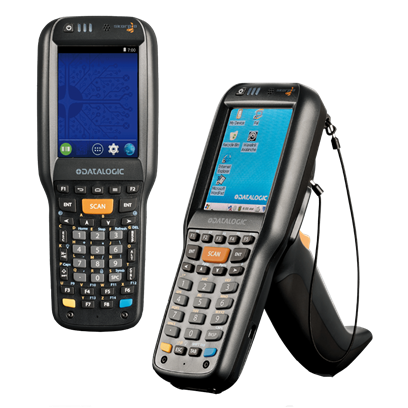
Inventory Count: fixed readers to ensure the proper placement and retrieval of goods
Inventory Count: fixed readers to ensure the proper placement and retrieval of goods
INTRODUCTION TO MODERN INVENTORY MANAGEMENT
In today’s dynamic and fast-paced economic environment, effective inventory management in industries such as grocery is paramount, especially with the ever-expanding markets and increasing consumer demands. A systematic approach to inventory counting is essential; it is not just a process but a strategic endeavor. It contributes to efficient operations, accurate financial reporting, and a consistent customer experience.
THE ANATOMY OF INVENTORY COUNTING
Understanding the intricacies of inventory counting is crucial for any organization seeking accuracy and efficiency. At the core of this practice are two primary methodologies:
- Physical Inventory Count: Conducting a comprehensive count of every item in inventory provides a complete snapshot. However, its exhaustive nature could potentially disrupt ongoing business operations. Physical inventory counts are typically conducted periodically, such as at the end of a fiscal year or during scheduled maintenance shutdowns. This allows companies to accurately assess the amount of inventory.
- Inventory Cycle Counting: This inventory counting method takes a strategic approach by periodically checking specific inventory. Rather than counting all items at once, companies focus on validating essential or high-turnover items without disrupting daily operations. Inventory cycle counting allows for more frequent checks and provides a continuous view of inventory accuracy. This approach is commonly used in inventory systems.
Effective inventory management requires physical inventory counting and inventory cycle counting to ensure proper product placement and retrieval. Implementing a comprehensive inventory management system that incorporates different types of inventory counts enables companies to maintain optimal inventory levels, improve operational efficiency, and meet customer demand.
DEPLOY FIXED READERS FOR COMPREHENSIVE INVENTORY MANAGEMENT
To improve inventory management practices, companies are turning to advanced technologies such as fixed readers. Fixed readers, also known as Radio Frequency Identification (RFID) fixed readers, offer significant asset management benefits. Strategically placed throughout a facility, these devices use RFID technology to track and monitor inventory in real-time.
Here are some of the benefits of using fixed readers for inventory management:
- Real-time Visibility: Fixed readers provide instant visibility into inventory levels and locations. With continuous monitoring and automated data capture, companies can access accurate and up-to-date information about their inventory. This facilitates informed decisions about replenishment, order fulfillment, and demand forecasting.
- Efficiency and Accuracy:
- Fixed readers improve efficiency and accuracy by eliminating manual data entry. Fixed readers streamline the inventory counting process by automating data collection. Instead of manual counting or barcode scanning, RFID technology enables fast and accurate identification of multiple items simultaneously. RFID technology reduces human error, improves efficiency, and saves valuable time. Inventory counts involve careful planning with specific dates and times and can be time-consuming.
- Non-Disruptive Operations: Fixed readers provide continuous monitoring without interrupting daily activities, eliminating the need for disruptive traditional physical inventory counts. By implementing RFID technology, inventory can be counted in the background, allowing companies to ensure accurate inventory data while maintaining productivity.
- Inventory Optimization: With real-time visibility, organizations can optimize inventory levels, identify slow-moving or obsolete items, detect out-of-stocks or overstocks, and take proactive measures to improve inventory turns and reduce carrying costs. Fixed readers can collect data to generate inventory reports.
- Enhanced Customer Experience: Accurate inventory management directly impacts customer satisfaction. Fixed readers help companies ensure product availability, reduce out-of-stock, and provide precise delivery estimates. This directly boosts order fulfillment speed, prevents backorders, and improves the overall customer experience.
STRATEGIC IMPLICATIONS OF AN ACCURATE INVENTORY
Inventory management is more than just numbers and has significant business strategic implications. Accurate inventory records have an impact on several operational areas, including:
- Financial Metrics: Accurate inventory records impact financial metrics such as cost of goods sold (COGS). COGS calculations enable businesses to determine profitability, evaluate pricing strategies, and make informed financial decisions.
- Procurement and Supply Chain Management: Accurate inventory data is essential for procurement and supply chain management. It helps companies streamline procurement processes, precisely forecast demand, and maintain optimal inventory levels. Companies can guarantee timely and efficient procurement and reduce out-of-stocks.
- Sales Forecasting and Marketing Strategies:
- Accurate inventory data is vital for forecasting sales and developing effective marketing strategies. It allows companies to predict demand, identify trends, and plan promotions or discounts accordingly. By aligning inventory levels with customer demand, companies can increase sales opportunities and improve customer satisfaction.
To obtain accurate inventory data, businesses can take advantage of advanced tools such as Datalogic’s handheld mobile computers.
EMBRACING TECHNOLOGICAL SOLUTIONS MANAGEMENT
The road to perfect inventory data is not without obstacles; human error is a major contributor. However, technologies such as fixed readers offer a powerful remedy. These devices feature state-of-the-art scanning technologies and wireless capabilities that enable instant data synchronization. When integrated with sophisticated inventory management software, these tools provide numerous benefits.
Barcode and RFID tracking, when used in conjunction with fixed readers, allow efficient and accurate monitoring of inventory items. Barcodes and RFID tags offer unique identifiers for each item, simplifying data capture during inventory requests, replenishment, and audits, resulting in fast and error-free processing.
AI-based anomaly detection is another key feature. Advanced inventory management software integrated with fixed readers can use AI algorithms to detect anomalies or discrepancies in inventory data, identifying issues such as stock discrepancies, misplaced items or potential theft and corrective action taken immediately.
Fixed readers, with their real-time data synchronization capabilities, also enable instant updates to inventory records. This ensures that inventory information is constantly updated, reducing the likelihood of out-of-stocks, improving order fulfillment accuracy, and increasing overall operational efficiency.
OPERATIONAL BLUEPRINT FOR EFFECTIVE INVENTORY COUNTS
Embarking on an inventory count requires careful planning to ensure its success. The planning process typically begins with defining a clear roadmap that includes setting count dates and times to minimize disruption to daily operations. In addition, pre-count activities play a crucial role in preparing for an efficient and accurate inventory count, such as purging outdated inventory data.
It is critical to eliminate outdated or irrelevant inventory data before conducting the inventory count, ensuring the count is based on current and precise information, thus minimizing the possibility of errors or discrepancies.
To streamline the counting process, companies can designate zones or sections for inventory organization. This allows inventory to be divided into manageable areas and count responsibilities to be assigned to specific teams or individuals, improving efficiency, and reducing errors.
By following an operational plan that includes meticulous planning, data cleansing, equipment calibration, and zone designation, businesses can execute efficient operations that produce reliable results.
LEVERAGE PREDICTIVE ANALYTICS
Leverage Predictive Analytics is the key to the future of inventory management. Today's advanced inventory management software comes equipped with predictive analytics capabilities beyond simple tracking and updating. By analyzing sales data from previous years, these software solutions provide valuable insights into inventory trends, enabling companies to anticipate market demands and adjust their strategies accordingly.
Analyzing historical sales data and market trends can predict future demand more accurately. As a result, companies can align their inventory levels with expected customer demand, reducing the likelihood of out-of-stock or overstock. In addition, predictive analytics can identify high-turnover or slow-moving inventory items to help optimize inventory levels.
Predictive analytics can help companies optimize supply chain management. This includes improving order fulfillment, managing supplier relationships more effectively, and reducing lead times.
By using predictive analytics, companies can make informed decisions, anticipate market changes, and gain a competitive edge in the ever-changing field of inventory management.
CONCLUSION
In today's complex business world, mastering inventory management is critical for any successful enterprise. Companies can navigate and excel in this challenging field by combining advanced fixed readers with sophisticated inventory management software. The benefits of such integrations include operational efficiency, accurate financial reporting, and an exceptional customer experience. By leveraging technology, companies can streamline inventory management processes, increase effectiveness, and achieve long-term growth in highly competitive markets.








